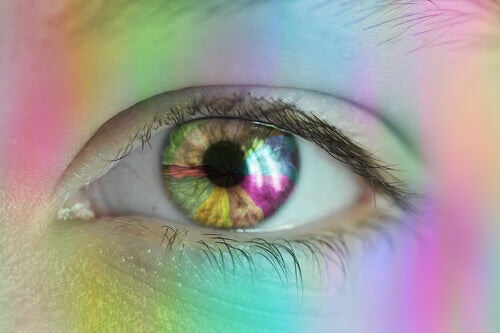Color vision is a very interesting and complex theme. Many of us wonder if we all really perceive colors in the same way. Who has never asked a friend: what is red to you is blue to me?
The visual system perceives achromatic colors (white, black and gray) and chromatic, when we talk about color we mean color colors and the correct term is dyed, despite this, the broadest and most well-known concept is color.
- The fundamental question.
- Which many people have asked the most often.
- Is what determines the color we perceive in the face of a visual stimulus.
- That is.
- Why do we see colors and how do we see them?Different theories have addressed color perception throughout history and.
- In this article.
- We will see the main ones.
In 1802, Thomas Young proposed one of the first theories on color vision: component theory or tricmatics, which was later perfected by Hermann von Helmholtz in 1852.
According to this theory, there are three different types of color receptors (cones) and each has a different spectral sensitivity. In addition, the color of a stimulus would be encoded by the number and proportion of activities of these receptors.
On the other hand, Ewald Hering proposed the reverse process theory in 1878. Hering postulated the existence of two types of cells in the visual system to encode color, and another type designed to encode brightness. His hypothesis revolved around the encoding of each type of cell. the perception of two complementary colors (pairs of colors that produce white or gray when combined in the same measure).
“Each person has his or her own color, a hue whose light is precisely filtered along the contours of the body. A kind of aura, as in the characters seen in backlight?. -Haruki Murakami-
However, on what basis did Hering base his theory?He noted that complementary colors did not work together. In the author’s words, “there is no bluish yellow or reddish green. “Another argument that led him to develop his theory was that the postimaging that occurs when setting red is green, and vice versa. Like the residual image during the search, the yellow color is blue and vice versa.
Thus, for many years, researchers have sought one theory or another, but over time it has been proven that the two coding mechanisms coexist in the visual system. Let’s dive into the topic below.
Young’s theory was not confirmed until the mid-1970s, using microspectrophotometry (a technique used to measure the spectrum of photopigment absorption in a cone), there were three types of cones in the retina of living beings with good color vision.
At the same time, they found that each of these cones contains a different photopigment with their particular absorption spectrum, for example, some cones are more sensitive to long waves, others to medium waves and others to short waves.
As for Hering’s theory, Chatterjee and Callaway (2003) demonstrated the opposite treatment of color at all levels of the retino-cool-striated system.
Through this, they discovered that in each of them, there are cells that respond in a sense to a color and countercly to a complementary color.
The above theories did not explain a fundamental aspect of color perception: color consistency. This concept refers to the fact that the color we perceive from an object is not simply a function of the wavelengths at which it is reflected.
For example, when we see our room at dawn, the light is not the same as at noon, the wavelengths change, but you can see the same color, the wall of our house may seem more or less dark depending on the light, but we know it is the same color.
So, the consistency of the color, the tendency of an object to remain of the same color despite significant changes in the wavelength of the light it reflects?(Pinel, 2012). In fact, it provides us with an adaptive function in our ability to distinguish one object from another, because otherwise the color would change every time it was lit.
Land’s Retinex theory (1977) states that “the color of an object is determined by its reflection (the proportion of light of different wavelengths reflecting a surface)”.
Hurlbert and Wolf (2004), following this theory, state that “the visual system calculates the reflection of surfaces. In this way, do you perceive colors by comparing the reflected light on adjacent surfaces (short, medium, or long)?”.
“There are things of color that come to me while I paint, big and intense things. ” Vincent van Gogh.
In other words, the visual system is able to calculate the wavelengths reflected by a surface and continue to perceive the same color, despite the lighting changes. It doesn’t matter if an object receives more or less light; your color won’t change for us.
Shapely and Hawken (2002) argue that Land’s theory is important because it assumes the existence of a type of cortical neuron that involves color vision, that is, color vision.
As we can see, despite the great scientific advances related to brain function, much remains to be studied, the vision of colors is a recurring subject and there are more and more discoveries about it, theories have evolved and this means that some can be abandoned. others complemented and others seem completely new.
“I try to apply colors like words that form poems, like notes that make up music. “-Joan Miró-

